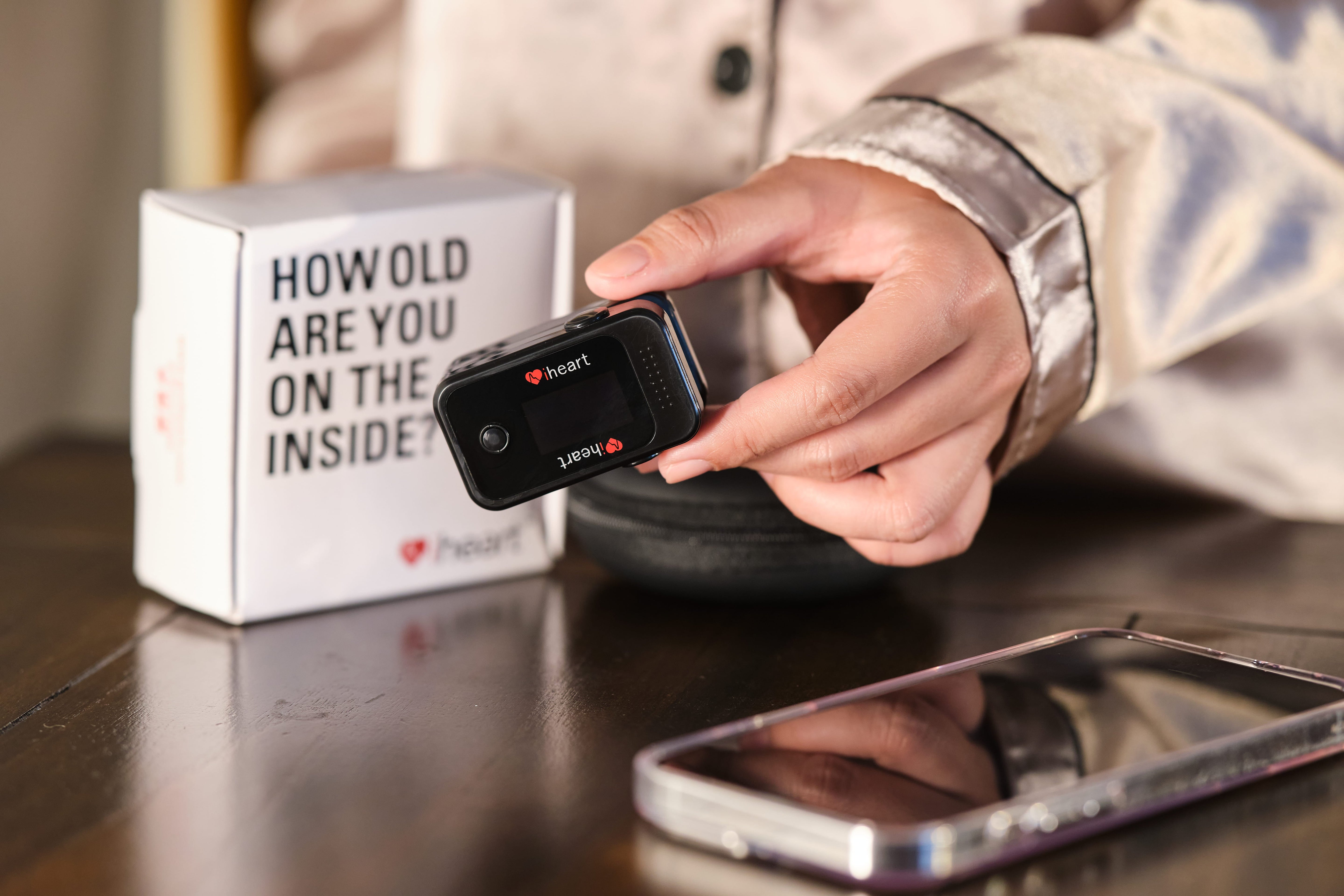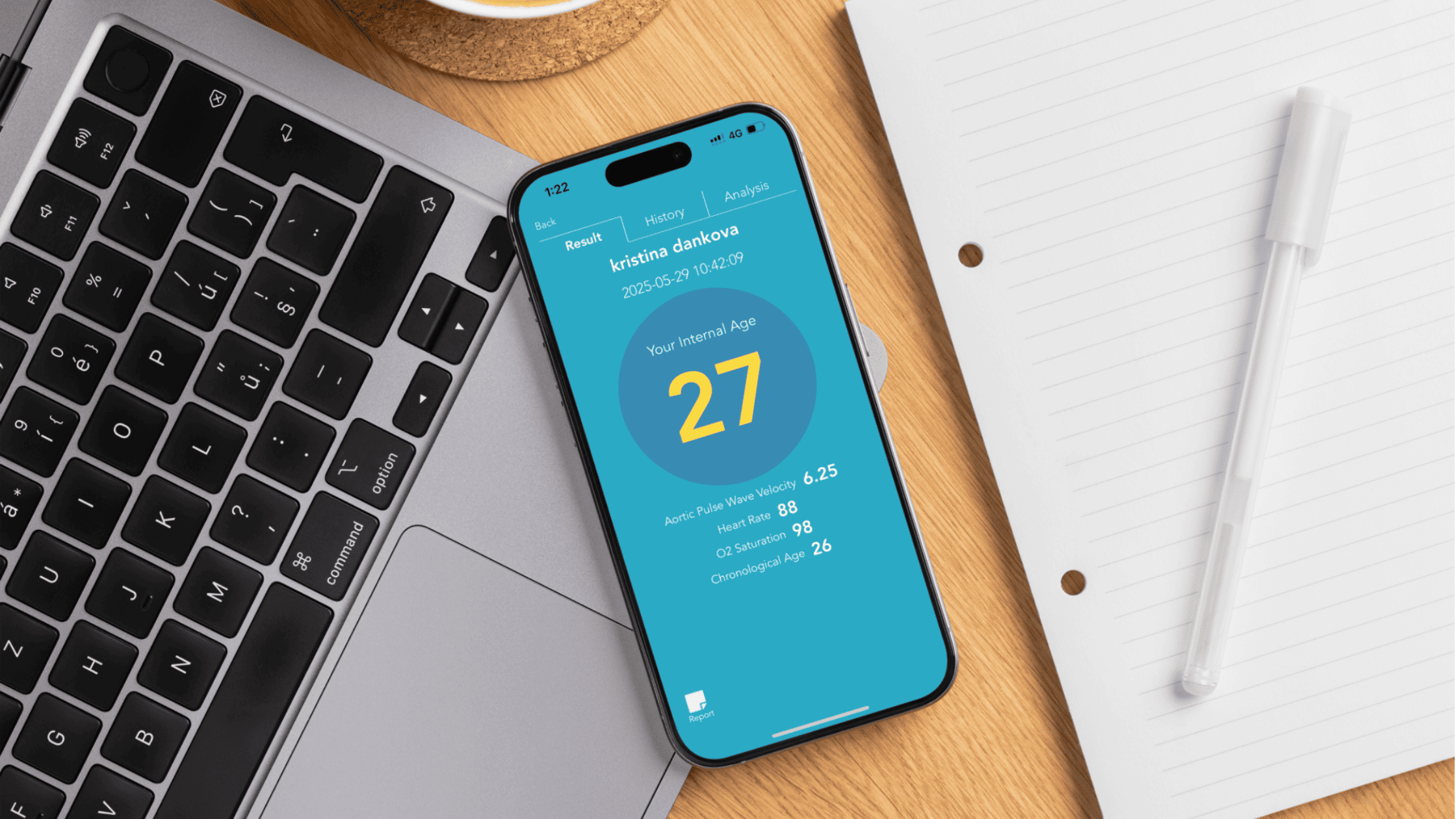Still relying on face cream and supplements to fight aging? Here’s the anti-aging tool that actually tracks results. Because your Inner Age is where it all begins. Once you focus on that, everything else starts to fall into place.
At iHeart Wellness, we’ve spent over a decade redefining what it means to take care of your health from the inside out—helping thousands of people not just slow aging, but actually reverse it and feel better than ever.
Curious if you could be next? Buckle up. What you’re about to learn might just change your life. And yes, we know that’s a bold promise—but we’re excited for you to see what’s possible. Let’s dive in.

The truth about aging (Spoiler: It’s all about your Inner Age)
In our culture, aging is often treated like a countdown. Something to be feared or avoided. And chances are, you’ve heard phrases like “Enjoy it while you can—everything starts to go downhill after 30.”
There’s a bit of truth in that. Around your thirties, the body naturally begins to shift. Cell renewal slows, energy levels can drop more quickly, and signs of aging—like wrinkles or fatigue—may become more noticeable.
Yet aging isn’t just about wrinkles or birthdays. It’s about how your heart, brain, and organs are holding up inside. That’s your Internal Age—and now, for the first time, you can see it, track it, and reverse it.
This is where the concept of Inner Mobility becomes essential.
It refers to how freely and efficiently your body moves and functions internally. And it plays a major role in determining your Inner Age, or how young—or old—your body truly is beneath the surface.
While your genes and the passing of time do have influence, your daily habits and lifestyle choices are the biggest factors shaping how you age.

Biological age vs chronological age
Our chronological age simply reflects the number of years we've been alive. However, this number doesn't necessarily represent how well our body is functioning internally.
In contrast, Internal Age (biological age)—provides a more accurate picture of our body's physiological state. It considers various factors, including cellular health, organ function, and overall vitality.
For example, think of two people who are both 50. One runs, breathes deeply, and wakes up with energy. The other struggles with fatigue, brain fog, and inflammation. Same birthday. Very different Internal Age. That’s what we help you track—and change.
Essentially, while chronological age is fixed, biological age can vary based on lifestyle choices, environmental exposures, and genetic factors.
You might observe signs of aging externally, such as graying hair or wrinkles. But the most significant aging processes occur at the cellular level, affecting how our body operates and responds to stressors.
Here’s what science says
Recent studies have highlighted the importance of biological age in predicting health outcomes.
For instance, research published in the Journal of the American College of Cardiology emphasizes that biological aging, marked by declines in tissue and organ function, is a more relevant indicator of health than chronological age.
Or, a study in Nature Communications found that interventions targeting biological age, such as specific dietary practices, can effectively reduce this age marker, potentially leading to improved healthspan.
Understanding and monitoring your biological age (your Internal Age) can empower you to make informed decisions about your health, aiming not just for a longer life, but for a life filled with vitality and well-being.

The role of Inner Mobility in the aging process
When we think of aging, most of us picture the external signs—wrinkles, gray hair, maybe a little stiffness in the joints. But actually, the real story of aging happens deep inside the body.
At iHeart, we’ve found that one of the most overlooked—but most important—factors in the aging process is something we call Inner Mobility.
It’s all about the flexibility and movement of your body’s core—your spine, diaphragm, ribcage, and pelvis.
Here’s why it matters:
When these core structures move freely, you breathe better. That deep, nourishing breath allows your diaphragm to gently massage your organs, support circulation, and even nourish your brain by circulating cerebrospinal fluid (CSF).
The result? Healthier organs, a strong immune system, better detox, improved brain function, and a more resilient nervous system.
But here’s what really changes the game: your spine and your aorta are tightly linked.
When your spine becomes stiff, your aorta (your body’s main artery) does too. And that stiffness is one of the strongest indicators of how well (or how fast) you're aging internally.
This is where Inner Mobility becomes so important. Because the more mobile your spine and diaphragm are, the more flexible your aorta is—and the healthier your entire internal system becomes.
THE TAKEAWAY: Inner Mobility is like oiling the gears of a machine. When your spine, diaphragm, and rib cage move well, your entire system flows better—from blood to breath to brain.
The biological age used to be a mystery. But not anymore!
For the longest time, your Internal age (biological age)—how old your body truly is on the inside—was impossible to measure without expensive equipment. Even today, you’ll find experts saying things like:
“We are not far away from having very precise measures that allow us to determine someone's biological age. We're optimistic that we'll soon be able to tinker with the biology of aging so that people can live longer health spans.” Dr. Vaughan.
But here’s the thing: We’re already there.
The iHeart Wellness Monitor is the first and only publicly available device that can measure aortic stiffness—a direct reflection of your Inner Mobility—using a simple fingertip monitor.
It’s science-backed, doctor-developed, and gives you real-time insights into your true Internal Age and how your daily habits are influencing your health at the deepest level. Through its Internal Age app.

How the iHeart app measures your Internal Age
The iHeart Wellness Internal Age app measures three key markers your body gives off - each one telling a story about how you're doing on the inside. When combined, they give you your Internal Age, the true age.[c]
Let’s have a look at what it measures:
1. Aortic Pulse Wave Velocity (PWV): Your Inner Mobility Score
PWV measures how fast the pressure wave from your heartbeat travels through your arteries—specifically, your aorta (the body’s main artery).
Why it matters: The stiffer your aorta, the faster that pulse wave moves. And stiffness in the aorta is one of the strongest, research-backed predictors of heart disease, stroke, and even cognitive decline.
But it’s not just about your arteries. Your spine, ribcage, and diaphragm directly impact how flexible your aorta can be. When these core areas move well (what we call Inner Mobility), they help the aorta move and expand naturally too.
When they’re tight and stuck, the aorta stiffens—and your Internal Age goes up. It’s really that simple. You don’t need a doctor to understand this.
Lower PWV = a more flexible aorta = a younger, healthier body on the inside.
PWV
What it is: How fast blood pressure pulses through your arteries.
Why it matters: Higher speed = stiffer arteries = older internal age.
iHeart helps you track this—and reverse it.
2. Heart Rate: Your Stress + Recovery Response
Your heart rate plays a supporting role by giving context to your PWV score.
Here’s what it tells us: A high resting heart rate can signal stress, poor recovery, or low vagal tone—all signs your nervous system is overworked and aging faster than it should.
A low and steady heart rate? That usually means better cardiovascular health and a more balanced nervous system. In other words, your body knows how to recover.
Healthy score: 60 -100 BPM
Heart Rate
What it is: The number of times your heart beats per minute—especially at rest.
Why it matters: A higher resting heart rate can signal stress and lower resilience.
iHeart shows how your lifestyle is affecting your stress response. So you can calm your system and feel more balanced!
3. Oxygen Saturation (SpO₂): How Well You Breathe
SpO₂ is a measurement of how much oxygen your blood is carrying. Seems simple—but it’s a goldmine of information.
If your oxygen levels are low, it might be a sign that your breathing mechanics, posture, or even circulation need attention. And over time, poor oxygenation can lead to fatigue, inflammation, and even organ strain.
High, steady oxygen levels mean your lungs and blood vessels are doing their job beautifully—delivering oxygen where it needs to go, supporting energy, and helping your body regenerate. Exactly what you want for long-term health and graceful aging.
A healthy score here is 95-100.
Oxygen Saturation (SpO₂)
What it is: The percentage of oxygen in your blood.
Why it matters: Low levels = poor breathing and circulation = lower energy and slower recovery.
iHeart helps you track your oxygen efficiency—so you can breathe better, recover faster, and feel more energized.
P.S.: The iHeart app suite doesn’t stop at measuring your Internal Age. You’ll also get access to four more powerful apps. We designed each to give you even deeper insights into your health.
- The iHeart Brain app measures your autonomic nervous system and tracks your Orthostatic Response—a key marker of how well your brain and nervous system are functioning.
- The HRV app helps you understand your body’s stress response and recovery patterns.
- With iHeart Record, you can log and monitor trends over time.
- And the iHeart Remote app lets you share your results with a wellness practitioner—or a loved one—so you’re never doing this journey alone.
The good news? Your biological age is in your hands
Chronological age only moves in one direction. But your Inner age—the way your body actually functions on the inside? That’s something you can change.
People using iHeart have lowered their Internal Age by 5 to 10 years in just weeks—through breathwork, mobility training, and smarter daily habits. And so can YOU. And have more energy. Clearer mind. A body that moves with ease.
Most of us were told aging just means decline. That we should expect pain, fatigue, and “normal” health issues as we get older. But after just a few months using the iHeart Wellness Monitor, you’ll see that story doesn’t have to be yours.
So if you've been blaming your age for how you feel? It's time to retire that excuse. Here’s our tough love advice: Take your health into your own hands. Take your Inner Age test. Work on your Inner Mobility. Track your progress. And watch what happens.
Because when you support your body from the inside out—amazing things follow. To get started, order your iHeart Wellness Monitor here!







Share:
DIY Daily Foot Care Routine: 5 Steps to Happy Feet
Pilates for Longevity: Not Just for Toning, But for Staying Young Inside Out